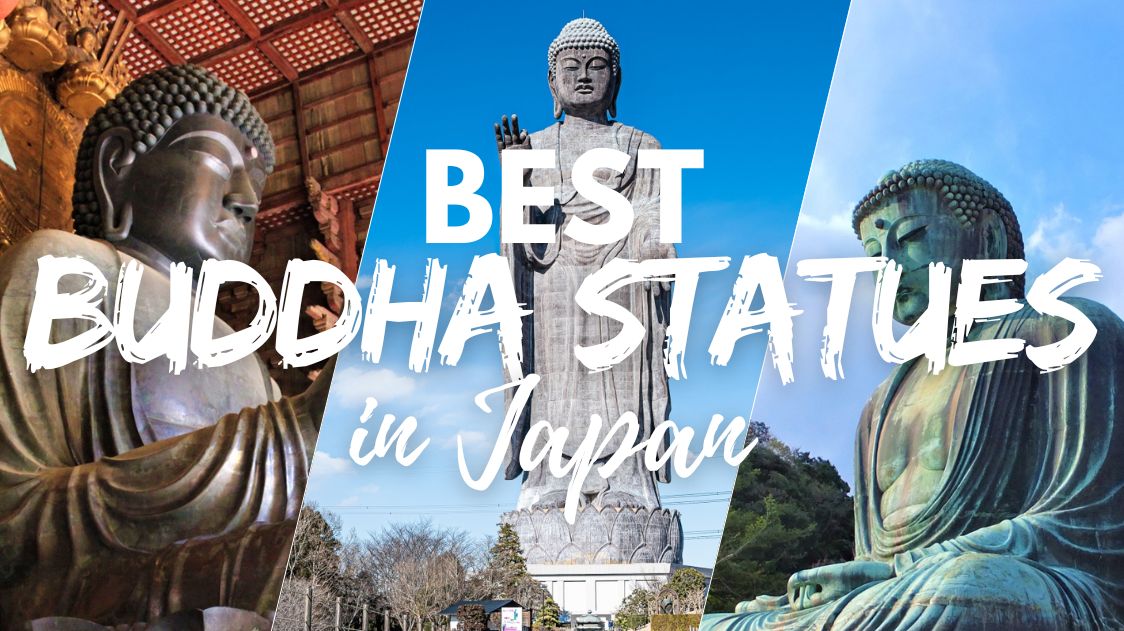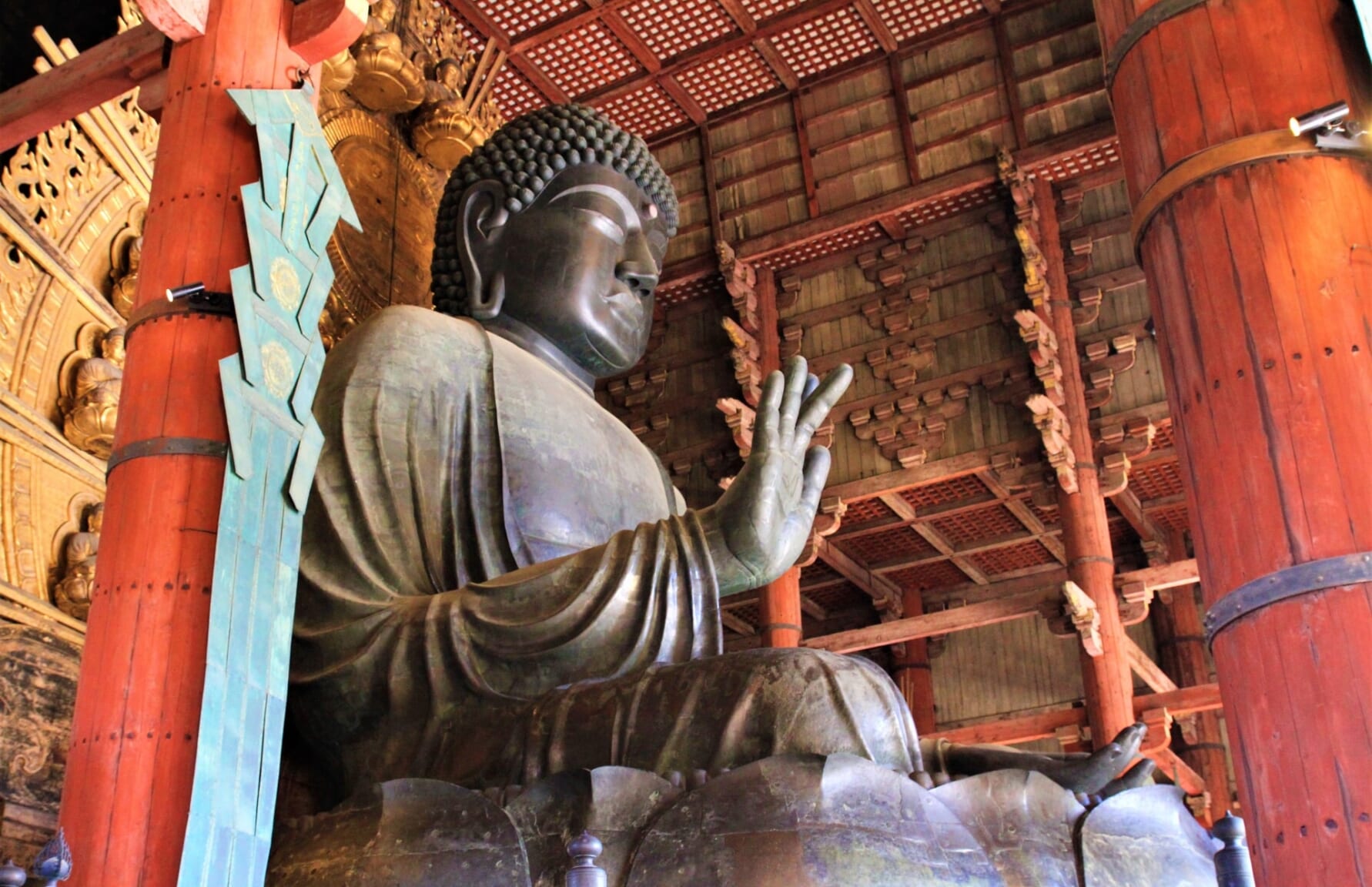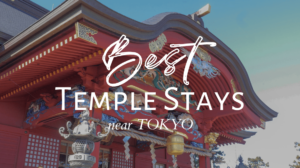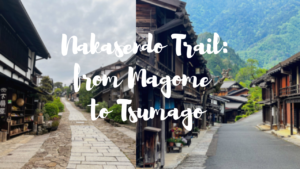10 Best Buddha Statues in Japan
When Buddhist Spirituality and Artistry Collides

In Japan, the Daibutsu—immense Buddha statues—serve as more than just monumental landmarks; they are the nexus where history, spirituality, and art converge.Originating as early as the 7th century, these statues have been integral to Japan’s religious landscape, reflecting the nation’s deep-rooted Buddhist traditions that came to its shores around the 6th century.
With approximately 75,000 temples across the archipelago, the variety and scale of these statues are as diverse as the temples that house them. From the Tōdaiji Daibutsuden in Nara, which offers a window into ancient religious practices, to the more recent Ushiku Daibutsu, a marvel of modern engineering, each Daibutsu serves as a living narrative.
Far from being mere tourist attractions, they enrich our understanding of Japan’s complex cultural and spiritual heritage, making them must-visit sites for both the devout and the curious. Here are the 10 best Buddha statues in Japan.
1. The Timeless Majesty of Tōdaiji Daibutsuden

Crafted meticulously from bronze and adorned with gold leaf, the statue represents Vairocana Buddha, embodying the concept of cosmic enlightenment. Its historical significance is unparalleled, serving as a testament to ancient religious practices and artistic techniques.
Over the years, it has become a pilgrimage site for the devout, scholars, and art enthusiasts, each drawn to its multifaceted allure.
▽More information about Daibutsuden!▽
▶Todaiji Temple: Meet the World’s Largest Buddha
2. Kamakura Daibutsu: A Bronze Colossus

Cast in the 13th century from bronze, this colossal figure has survived natural disasters, including typhoons and tsunamis, remaining largely unscathed, unlike the old structure of Kotokuin Temple that used to house it. That’s why, unlike many of its counterparts, which are enclosed within temple buildings, the Kamakura Daibutsu sits in the open air, adding a unique dimension to its majesty. Its serene expression and imposing posture have made it an iconic representation of Amida Buddha.
Over the centuries, it has attracted a diverse array of visitors, from pilgrims seeking spiritual solace to historians intrigued by its storied past.
▶ Kotokuin Temple official website: https://www.kotoku-in.jp/en/
3. Ushiku Daibutsu: The Skyward Giant

Located in Ushiku, Ibaraki Prefecture, the statue is constructed from bronze and reaches a staggering height of 120 meters, including its base, making it the 5th tallest statue in the world. Inside, the statue houses a 5-floor structure where visitors can engage in activities like hand-copying Buddhist sutras and enjoying panoramic views from an 85-meter-high observatory. Seasonal events and flowers add to the experience, and the statue is specially lit up during the Bon and New Year’s Holidays, complete with fireworks.
It’s relatively close to Tokyo, so it’s an ideal destination for a day trip.
▶ Ushiku Daibutsu official website: https://daibutu.net/
4. Showa Daibutsu: The Northern Sentinel

Located within the Seiryōji Temple, the statue is a focal point during the Bon Festival, a traditional Buddhist event honoring ancestral spirits. Its construction in 1984 marked a new chapter in the Shingon sect of Buddhism, blending modern engineering with ancient religious symbolism.
The Showa Daibutsu serves as both a spiritual and artistic landmark, drawing a diverse crowd ranging from devout followers to curious tourists.
▶ Showa Daibutsu official website: http://showa-daibutu.com/
5. Nihonji Daibutsu: The Mountain Carved Deity

Representing Yakushi Nyorai, the Buddha of Healing, this statue is carved directly into the mountain, making it an integral part of the natural landscape. Created in the 1780s, it stands as a testament to the intricate craftsmanship of its era, as well as the spiritual significance of its location. The Nihonji Daibutsu is a statue that brings together the best of natural beauty and spiritual symbolism, attracting both pilgrims and nature enthusiasts.
▶ Nihonji Daibutsu official website: http://www.nihonji.jp/
6. Takaoka Daibutsu: The Phoenix of Buddha Statues

Originally built in the 13th century, the statue has faced numerous calamities, including fires that led to its complete destruction. However, each time it has been carefully rebuilt, the latest version being a copper marvel completed in 1933. This cycle of destruction and renewal mirrors the Buddhist concept of reincarnation, making the Takaoka Daibutsu a living embodiment of the faith’s core principles.
Its history is as layered as its intricate craftsmanship, making it a must-visit for anyone interested in the intersection of art, history, and spirituality.
▶ Takaoka City official website: https://www.takaoka.or.jp/index.html
7. Gifu Daibutsu: The Clay Titan

Located in Shoho-ji Temple in Gifu City, Gifu Prefecture, this statue is crafted from clay and bamboo, standing at an impressive 13.7 meters. Completed in 1832, it represents a different facet of Japanese craftsmanship, one that relies on more humble materials yet achieves an equally awe-inspiring result.
The Gifu Daibutsu serves as a testament to the versatility and ingenuity of Japanese artisanship, attracting a wide range of visitors from devout Buddhists to art historians.
▶ Gifu Daibutsu official website: http://www.gifu-daibutsu.com/
8. Tokyo Daibutsu: The Urban Oasis

Standing at 13 meters and completed in 1977, the Tokyo Daibutsu is a relatively new addition to Japan’s collection of giant Buddhas. Yet, it holds its own in terms of artistic merit and spiritual significance. Despite being one of the few Daibutsu easily accessible from the heart of Tokyo, its relative obscurity keeps it from attracting too many tourists. Even many Tokyo natives are unaware of its existence!
Truly one of Tokyo’s best-kept hidden secrets for anyone eager to experience spirituality in an urban setting.
▶ Tokyo Daibutsu official website: https://www.tokyo-daibutsu.com/
9. Nanzoin Daibutsu: The Reclining Marvel

Also, the Nanzoin Daibutsu is part of a Shingon Buddhist temple founded in Sasaguri in 1889. The temple is a key stop on the Sasaguri pilgrimage route, which includes 88 temples. Beyond the statue, the site features additional attractions like Fudo Myoo statues. An intriguing tale adds to the statue’s allure: it’s said that worshipping here could bring good fortune, as evidenced by the temple’s chief priest, who has won significant lottery sums and invested much of it back into the temple.
At 41 meters long and weighing around 300 tons, it’s one of the largest bronze statues in the world, making it a must-visit for those interested in the unconventional.
▶ Nanzoin Temple official website: https://nanzoin.net/en/
10. Hyogo Daibutsu: The Contemporary Sentinel

Completed in 1991, this 16-meter-tall statue is located in Nofukuji Temple and represents Amida Buddha. Unlike its historical counterparts, the Hyogo Daibutsu is a product of modern engineering and materials, yet it captures the timeless essence of Buddhist artistry and devotion. Its relatively recent construction does not diminish its spiritual gravitas; instead, it adds a contemporary layer to the rich collection of Japan’s religious landmarks.
As a modern interpretation of ancient themes, the Hyogo Daibutsu offers a fresh perspective on the enduring appeal and significance of these monumental figures.
▶ Nofukuji Temple official website: http://nofukuji.jp/
In Japan, Daibutsu are more than monumental sculptures; they are the embodiment of a rich interplay between history, spirituality, and art. These statues offer a profound lens through which to explore and appreciate the nation’s multifaceted cultural and spiritual landscape.
▽Subscribe to our free news magazine!▽
For more information about religious landmarks and traveling in Japan, check these articles below, too!
▽Related Articles▽
▼Editor’s Picks▼
Written by
Photographer, journalist, and avid urban cyclist, making sense of Japan since 2017. I was born in Caracas and lived for 14 years in Barcelona before moving to Tokyo. Currently working towards my goal of visiting every prefecture in Japan, I hope to share with readers the everlasting joy of discovery and the neverending urge to keep exploring.













